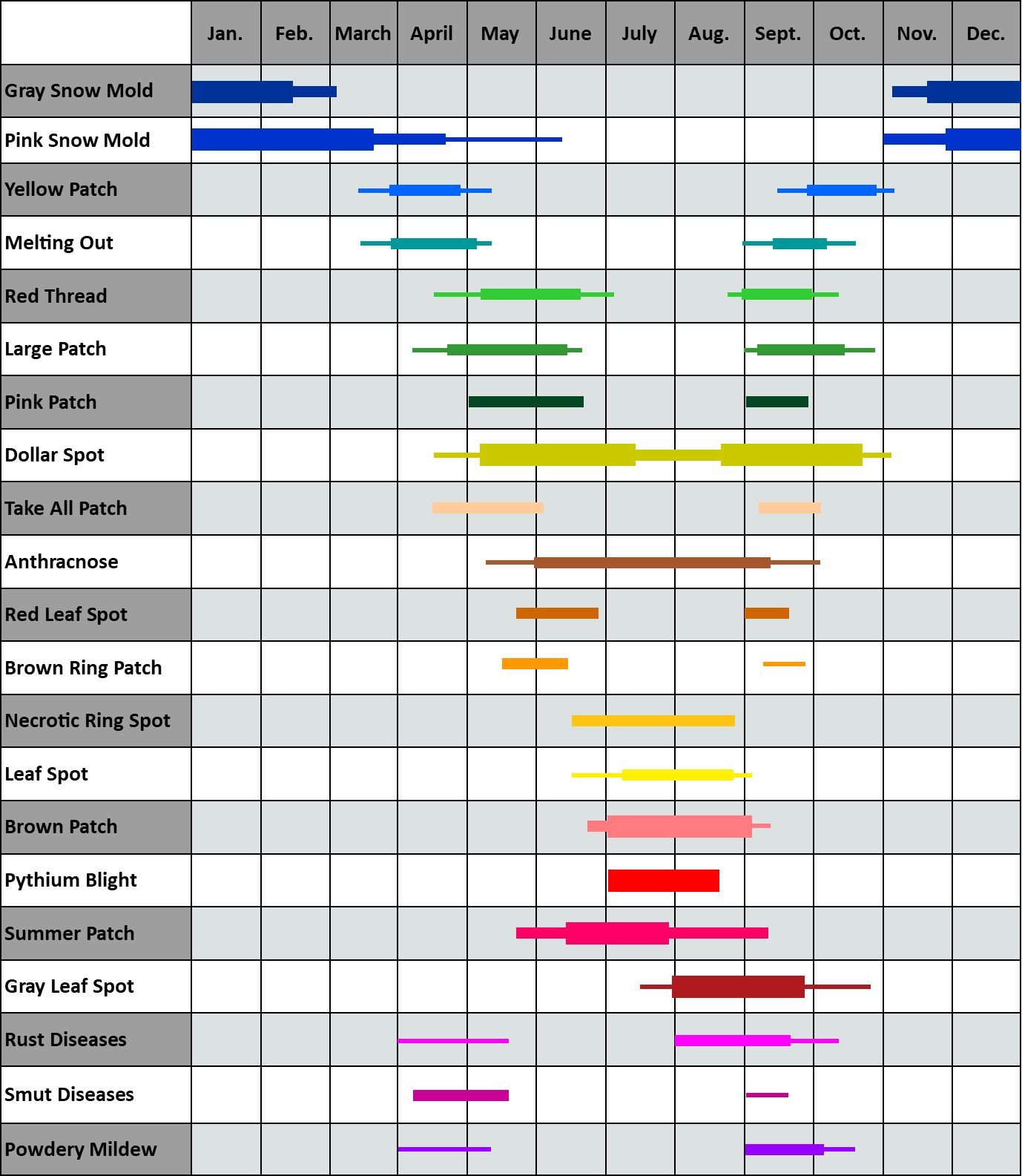Spring is a beautiful season that brings with it the promise of new beginnings and fresh starts. For homeowners, this time of year is an excellent opportunity to begin preparing their lawns for the warmer months ahead. However, with the joys of spring come some unwelcome guests in the form of lawn care diseases.
When these three factors come together, it creates the perfect environment for lawn diseases to thrive. The activation of turf diseases relies on the presence of three key components. These components are: the host, the pathogen, and the environmental conditions that favor infection. Without any one of these components, the triangle remains incomplete and the disease will not develop. Although it may not be possible to control all of these components, there are some steps you can take to protect your lawn from turf diseases. For instance, choose a grass seed that is resistant to diseases like Turf Type Tall Fescue, mow your lawn at a taller height and regularly, avoid watering in the evening, and ensure that your lawn is fertilized appropriately.

Lawn care diseases can cause significant damage to your lawn and can quickly spread if left untreated. In this article, we’ll take a closer look at some of the most common spring lawn care diseases and what you can do to prevent them.
- Red Thread Disease – This is a fungal disease that creates red or pinkish threads on grass blades, causing them to become weak and prone to breaking.
- Snow Mold – This is a fungal disease that appears after snow melts, creating circular patches of dead, matted grass that can be brown or gray in color.
- Dollar Spot – This is a fungal disease that creates small, circular patches of brown or straw-colored grass that are the size of a silver dollar.
- Brown Patch – This is a fungal disease that creates irregular patches of brown, dead grass that can be several feet in diameter.
- Rust Disease – This is a fungal disease that creates a yellow or orange powdery substance on grass blades, which can cause the grass to become weak and thin.
- Fusarium Blight – This is a fungal disease that causes the tips of grass blades to turn brown or straw-colored and die.
- Pythium Blight – This is a fungal disease that creates irregular patches of slimy, black, or dark brown grass that can be several feet in diameter.
- Anthracnose – This is a fungal disease that creates small, irregular patches of dead grass that can be several inches in diameter, with tan or brown borders.
- Necrotic Ring Spot – This is a fungal disease that creates circular patches of dead, brown grass that can be several feet in diameter.
- Summer Patch – This is a fungal disease that creates circular patches of dead, brown grass that can be several feet in diameter, usually in the summer but can also appear in the spring.
It is essential to identify the disease affecting your lawn accurately before treating it. Proper diagnosis can help you choose the right treatment, such as using fungicides, adjusting watering practices, improving soil quality, and proper fertilization, among other things.



